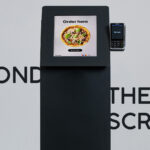Published by
Engagement, engagement, engagement!
This has been the mantra for apps since the beginning. The more time you spend in the app, the better the app is doing, and the better it should be judged. Executives at companies all over the world were looking for ways to get as much time in their app as possible, with comparisons being constantly made to Facebook, Instagram, WhatsApp, and the like. The number of app downloads and daily/monthly active user count have been standard measurements for how brands stack up against their competition. But most apps don’t have this constant connection to users, so the numbers always seemed minuscule in comparison. They might see a few minutes per month, but little more.
Now we are seeing a pushback against constant interaction with our devices. Parents are implementing “screen time” rules that cover television, phones, tablets and anything else with a screen. Smartphone and smart device manufacturers are offering tools that help monitor how much time you’re using your device and even give breakdowns of where your time is spent. “Digital wellness” revolves around making sure the time that you spend on a device doesn’t disconnect you from the real world — and complements your lifestyle instead of destroying it.
So, how can companies succeed when people are trying to use their devices less? Measuring the amount of time spent in your app is not the best measure for a large portion of brands. Apps like Facebook and Instagram play a different engagement game than most other apps do. Facebook and Instagram play the “attention” game. More attention from their users results in more revenue for the business, as their models are advertising-based. Most other brands should be playing in the “transaction” and “productivity” games, which require a much different type of experience and a different set of metrics that indicate digital health.
Let’s look at some other alternatives:
MONEY
The most obvious success measure for most businesses would be the amount of revenue being driven by the app. Whether this is total revenue through mobile channels, average revenue per user or average transaction amount, you may see upward trends that indicate success in these metrics. If usage seems to be dropping but spend is increasing, maybe your market is narrowing and you’re finding your most mobile-oriented customers. Growing that user base should be your next goal, because you know you have a way to monetize new customers.
THE TRANSACTION GAME
This game focuses on helping customers make purchases and is mainly played by e-commerce apps. Some examples of digital wellness metrics within this game could be transactions or purchases per user or purchases per customer visit/session. The value exchange is within the transaction and is the leading indicator of revenue in this game. The entire experience is oriented toward getting users to make as many transactions as possible.
THE PRODUCTIVITY GAME
This game, on the other hand, is focused on creating simple workflows and tasks easier for users and is used primarily by B2B applications. Some examples of digital wellness metrics within this game could be average records created per account or the average number of questions answered per user. The value exchange is within the completion of a task and is the leading indicator to revenue in this game. The entire experience is oriented toward getting users to be as productive as possible around a task or workflow.
TIME, MEASURED INVERSELY
Time is our most valuable asset, with everyone only getting 24 hours per day. The amount of time that customers give you in your app should be seen as a gift, and it’s best to use it wisely. By lowering the time it takes to complete actions, you’re reciprocating that gift back to them. If you save them 10 seconds with every major action and they do a few actions per day, that adds up to hours per year. Don’t underestimate how much a few seconds can detract from the experience your app provides.
RETENTION
Customer acquisition costs can be hard to track with simple analytics, but most analytics packages can easily track how many users come back to your app over time to perform a valuable action within it. This is customer retention and is the key digital wellness metric that serves as the foundation for driving sustainable growth. By building an engaging app — and notifying users of key times to return to the app — you will see increases in your customer retention and a corresponding long-term impact on your revenue and customer satisfaction. Determine when customers drop off — and why — and figure out if it’s a market fit issue, a value proposition that the user is missing out on, or an expectation not being met.
MOVING OUT OF THE BUBBLE
Finally, it may be time to move your mobile analytics out of a bubble and combine them with your other business metrics. Mobile continues to take over more and more market share, but customers still spend a large amount of time on web browsers or in-store. Being able to measure customer behavior across all of your digital touch points (web, mobile and physical) is key to being able to deliver a seamless experience that feels consistent across them. Teams that achieve this level of analytics will be able to drive larger engagement numbers than brands that don’t.
Share:
Categories
tags
Related Posts


The Great Big Budget Cut: Prioritization


